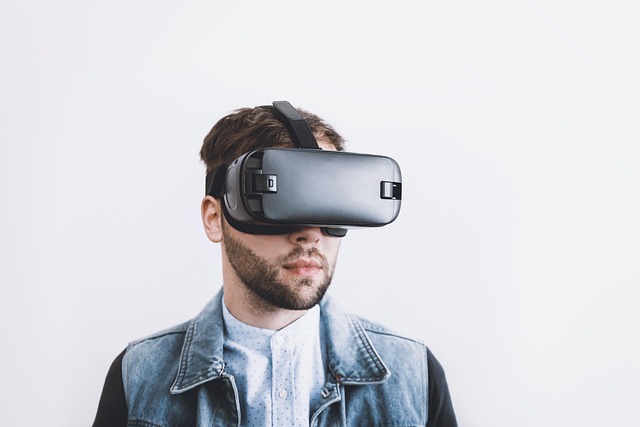Introduction
Imagine being able to explore the world from the comfort of your own home. Picture visiting exotic destinations and immersing yourself in new cultures without ever having to leave your living room.
Thanks to virtual reality (VR) technology, this is now possible. The travel industry is embracing VR like never before, giving travelers the opportunity to experience their dream destinations in a way that was once unimaginable.
In this blog post, we’ll take a closer look at how VR is revolutionizing the travel industry and explore some of the exciting possibilities it holds for travelers in 2023 and beyond. Ready for an adventure? Let’s dive into the world of virtual reality!
What is virtual reality?
Virtual reality, or VR for short, is a technology that uses computer-generated imagery and sensory feedback to create an immersive experience. By wearing a headset equipped with special lenses and sensors, users are transported to a digital environment that feels like the real world.
Further, One of the key features of VR is its ability to track head movements in real-time, allowing users to look around and explore their virtual surroundings as if they were truly there.
Additionally, many VR experiences incorporate haptic feedback – tactile sensations such as vibrations or pressure – which further enhances the sense of immersion.
Moreover, While early forms of VR date back decades, recent advancements in technology have made it more accessible than ever before. Today’s state-of-the-art headsets offer high-fidelity graphics and low latency tracking systems that minimize motion sickness.
Despite being primarily associated with the entertainment industry (such as gaming), increasingly diverse applications for this innovative technology continue to emerge across different sectors including healthcare, education and – perhaps most excitingly – travel.

How realistic is VR?
Virtual Reality (VR) technology has advanced rapidly over the past few years, offering increasingly realistic experiences. With high-quality 3D graphics and immersive audio, VR can transport users to new worlds and simulate real-life scenarios.
Moreover, One of the key factors that contribute to the realism of VR is its ability to track head movements in real-time, allowing users to look around and explore virtual environments just as they would in reality. Haptic feedback devices can create sensations like touch or vibration for an even more immersive experience.
However, there are still limitations to how realistic VR can be. For example, while visuals may be highly detailed, they may not always accurately represent physics or lighting conditions found in real life. Some users may experience motion sickness when using VR due to discrepancies between what their eyes see and what their inner ear perceives.

How is VR being used in the travel industry?
Virtual reality has become a buzzword in the travel industry, and for good reason. It allows travelers to explore destinations without actually being there physically. VR technology is already being used by airlines and hotels to showcase their products. For instance, some airlines have started offering 360-degree tours of their planes’ cabins before passengers buy tickets.
Similarly, hotels are using VR technology to give guests an immersive experience of what it’s like to stay at their property. Through virtual tours, potential customers can get a sense of the amenities available and the layout of rooms before making reservations.
Further, VR is also changing the way tour operators conduct business — companies are now able to provide interactive experiences that bring destinations alive. Tourists can take virtual trips to historical sites or cultural landmarks before they visit them in person.
Moreover, museums are taking advantage of VR technology as well – visitors can learn about ancient cultures with more depth than ever before through audio-guided tours while wearing headsets.
Importantly, VR provides exciting opportunities for businesses within the travel industry – from giving potential customers a taste of what they could expect on holiday/vacation or immersing them into different cultures when unable (or unwilling)to travel themselves!

What are the benefits of VR for travelers?
Virtual Reality (VR) has brought a new dimension to the travel industry. It provides travelers with an immersive experience that feels like they are actually in their desired destination, without physically being there. Here are some of the benefits that VR offers for travelers:
It enables travelers to explore destinations from the comfort of their own homes. This can be especially useful for those who may have physical disabilities or limitations preventing them from travelling long distances.
It allows travelers to preview accommodations and amenities before booking a trip. This can help them make informed decisions about where they want to stay and what activities they want to do while on vacation.
It helps reduce travel anxiety by allowing travelers to familiarize themselves with new environments before arriving at their destination. This can result in a more relaxed and enjoyable travel experience overall.
It also opens up opportunities for virtual tourism experiences that were previously impossible or impractical. For example, it allows people to visit historical sites or landmarks that may no longer exist in real life.

What are the best VR experiences for travelers?
Virtual Reality has revolutionized the way we experience travel, allowing us to explore destinations from the comfort of our own homes. Some of the best VR experiences for travelers include virtual tours of popular landmarks and attractions, immersive cultural experiences, and even virtual flights around the world.
One of the most popular VR experiences for travelers is visiting iconic landmarks such as Machu Picchu or The Great Wall of China. With VR technology, you can take a guided tour through these historical sites and learn about their history without having to leave your home.
Another great use for VR in travel is experiencing different cultures through immersive simulations. You can learn how to cook authentic dishes with local chefs or participate in traditional celebrations and festivals without ever leaving your living room.
For those who love flying but are afraid of heights or air travel itself, it offers an excellent alternative by simulating flights across various parts of the world. It’s a fantastic way to see places that may be challenging to reach physically.
What are some of the challenges of using VR for travel?
Despite the many benefits of using VR in the travel industry, there are also some challenges that come with it. One major issue is the cost of implementing VR technology. It can be expensive to create high-quality virtual experiences, and this cost may ultimately be passed on to travelers in the form of higher prices.
Another challenge is ensuring that the experience is accessible to everyone. Not all travelers may have access to VR headsets or devices capable of running these immersive experiences, which could limit their ability to fully engage with a destination virtually.
There’s also the issue of authenticity – while VR can provide a realistic representation of a location, it may not always capture everything about a place that makes it unique. For instance, smells and sounds cannot be replicated through virtual reality technology alone.
There’s always going to be an element of risk involved for businesses investing in new technologies like VR – they need to make sure that they’re investing in something that will pay off long-term rather than becoming outdated quickly as new innovations emerge.

How might VR evolve in the future?
The future of VR technology is bright and full of possibilities. As technology advances, we can expect to see even more realistic and immersive VR experiences in the travel industry.
One way that VR may evolve is through the use of haptic feedback. This technology would allow users to feel physical sensations within a virtual environment, such as wind or vibrations. This could enhance the realism of VR experiences even further.
Another potential development for VR in travel is the ability to interact with other users within a virtual space. Imagine exploring a new destination alongside friends or family members who are halfway across the world – all from the comfort of your own home.
With advancements in artificial intelligence, we may also see personalized recommendations and tailored experiences based on individual preferences and past travel history.

FAQs
Here are some common questions that people might have about virtual reality and its use in the travel industry.
Q: What is virtual reality?
A: Virtual reality (VR) refers to a computer-generated simulation of a three-dimensional environment that can be interacted with using specialized hardware, such as headsets and hand controllers.
Q: How realistic is VR?
A: The level of realism in VR varies depending on factors such as the quality of the hardware and software being used, but many users report feeling fully immersed in their simulated environment.
Q: How is VR being used in the travel industry?
A: VR is being used by travel companies to offer customers immersive experiences of destinations before they book trips. This includes 360-degree video tours, interactive maps, and even virtual hotel room walkthroughs.
Q: What are the benefits of VR for travelers?
A: Using VR allows travelers to get a better sense of what destinations will look like before they arrive, which can help them make more informed decisions about where to go. It also offers an opportunity for people who may not be able to physically visit certain locations due to mobility issues or financial constraints.
Q: What are some challenges of using VR for travel?
A: One challenge is ensuring that the experience accurately reflects what someone would actually see if they were there in person. There’s also concern over how much time consumers will spend using these technologies compared with traditional booking methods. Additionally, not everyone has access to high-quality hardware needed for optimal use.
Conclusion
To sum up, virtual reality is transforming the way we experience travel. With VR technology, travelers can explore destinations from the comfort of their own homes and immerse themselves in new cultures without ever leaving their living room. It provides a unique opportunity for people to see the world in a completely different way.
Although there are still some challenges that need to be addressed, such as access to expensive equipment and limited content availability, it’s clear that VR has enormous potential in the travel industry.
As technology continues to evolve and become more accessible, there will undoubtedly be even more exciting opportunities for travellers to enjoy immersive experiences around the world. So whether you’re an adventure seeker or just looking for a new way to unwind, virtual reality could be your ticket to exploring all corners of our amazing planet without leaving home!



